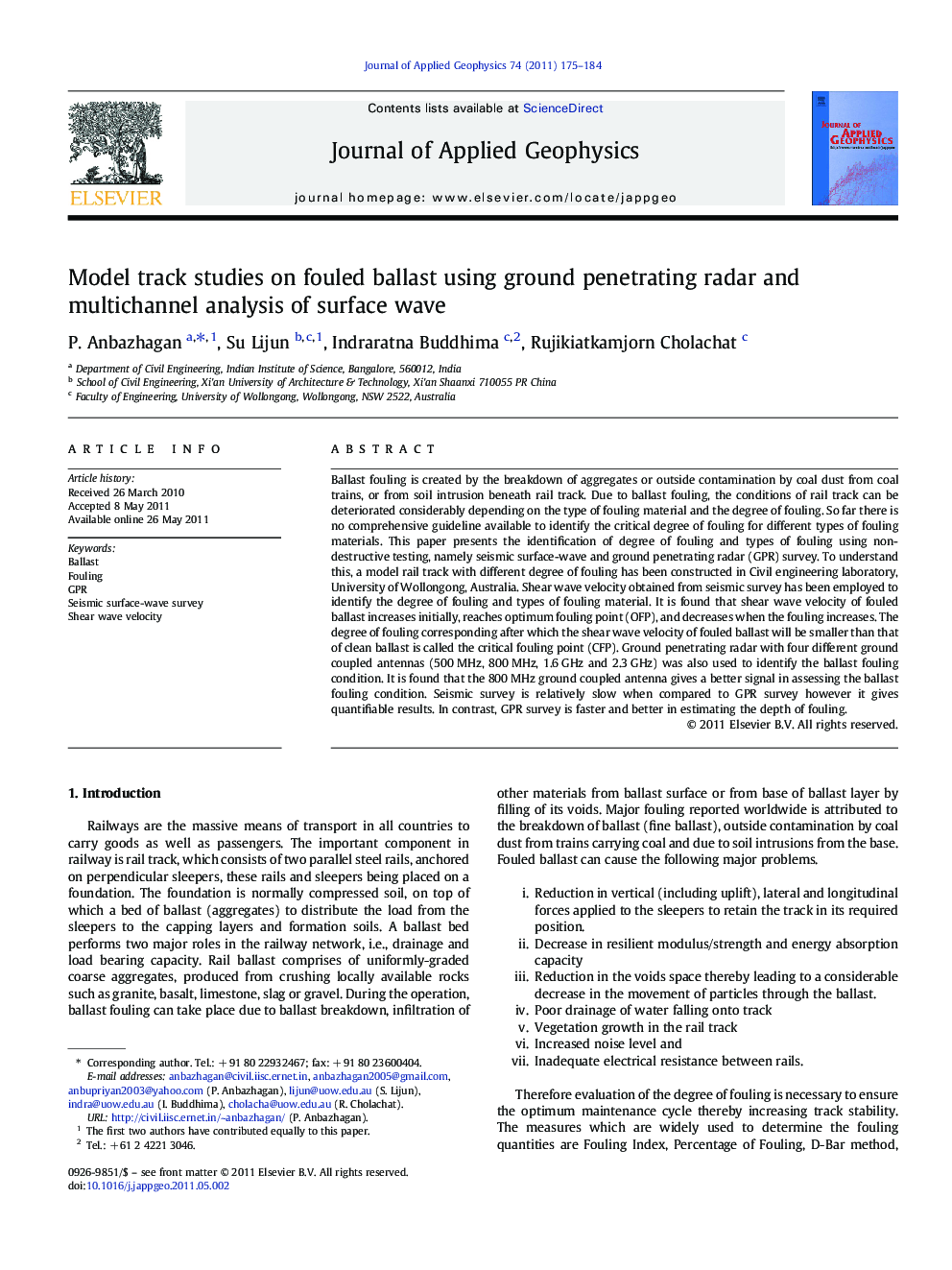| Article ID | Journal | Published Year | Pages | File Type |
|---|---|---|---|---|
| 4740683 | Journal of Applied Geophysics | 2011 | 10 Pages |
Ballast fouling is created by the breakdown of aggregates or outside contamination by coal dust from coal trains, or from soil intrusion beneath rail track. Due to ballast fouling, the conditions of rail track can be deteriorated considerably depending on the type of fouling material and the degree of fouling. So far there is no comprehensive guideline available to identify the critical degree of fouling for different types of fouling materials. This paper presents the identification of degree of fouling and types of fouling using non-destructive testing, namely seismic surface-wave and ground penetrating radar (GPR) survey. To understand this, a model rail track with different degree of fouling has been constructed in Civil engineering laboratory, University of Wollongong, Australia. Shear wave velocity obtained from seismic survey has been employed to identify the degree of fouling and types of fouling material. It is found that shear wave velocity of fouled ballast increases initially, reaches optimum fouling point (OFP), and decreases when the fouling increases. The degree of fouling corresponding after which the shear wave velocity of fouled ballast will be smaller than that of clean ballast is called the critical fouling point (CFP). Ground penetrating radar with four different ground coupled antennas (500 MHz, 800 MHz, 1.6 GHz and 2.3 GHz) was also used to identify the ballast fouling condition. It is found that the 800 MHz ground coupled antenna gives a better signal in assessing the ballast fouling condition. Seismic survey is relatively slow when compared to GPR survey however it gives quantifiable results. In contrast, GPR survey is faster and better in estimating the depth of fouling.
Research highlights► Identification of degree and types of fouling using MASW and GPR. ► The shear wave velocity (SWV) of clean and fouled ballast are measured. ► The SWV of fouled increases initially, reaches optimum and decreases. ► Optimum and Critical fouling point is defined for coal and sandy clay fouling. ► It is found that the 800 MHz ground coupled antenna gives better results.
